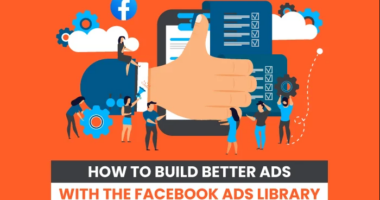I’ve written a lot of blog posts on AdWords, so it’s no secret that I’m a big fan and advocate of Google’s paid search ads. I’ve also spent a fair number of years working on some of the world’s largest ad campaigns, so I was curious to see if I could pick up some new tips from some of the world’s leading experts.
This year, we’re all trying to do better with our budgets—so how can we make sure that our advertising dollars are well spent? With the top keywords for this year from Google AdWords, it’s clear that many of us want to be more strategic in where we place our ads. In fact, according to Google, people are searching for the most relevant keywords in the 25-and-under demographic. At least that is what the data says.
The best way to increase awareness and engagement around your campaign is to hit target audience with the right message at the right time and place. The pursuit of targeted advertising has changed the way marketers communicate with people, offering a wider array of options to reach people at their most attentive. Every marketer needs to get creative and think outside the proverbial box when it comes to marketing strategies and tactics.. Read more about optimizing advertising meaning and let us know what you think.
With most firms engaging in digital marketing these days, the battle for online consumers’ attention is growing increasingly fierce. Even if you invest in the best ad campaigns, you’ll need to put in a lot of effort to get your advertising seen by a large number of people and turn them into customers.
That is why your ad efforts must be optimized.
The efforts you take to increase the performance of your ads are referred to as ad campaign optimization. It assists you in realizing your full potential and, as a result, increasing your revenues by:
- selecting the appropriate audience
- creating content and messaging that is customised
- utilizing the appropriate platforms and tools
- lowering the cost of acquiring new customers (CAC)
The key to designing successful ad campaigns is to make them customer-centric rather than product- or brand-centric. As a result, your marketing efforts will be more enticing.
But I’m getting ahead of myself. Let’s take a look at some of the techniques you may employ to improve your ad campaigns swiftly.
5 Ways to Improve Your Ad Campaign
Because technology advances at the speed of light, many advertising platforms update their algorithms on a regular basis to provide a better experience for both users and advertisers. One of the main reasons you should be regularly improving your ads is because of algorithm adjustments.
Let’s take a look at five ad campaign optimization tricks that can help you get the most bang for your buck (ROAS).
1. Develop Multi-channel Advertising Campaigns
Customers today may interact with brands on a variety of media. As a result, individuals may begin their voyage on one platform, continue on another, and end up on a different one entirely.
You must optimize by building multi-channel campaigns to boost your chances of conversion and making a sale.
Multi-channel ad campaigns combine multiple distribution and promotional channels into a single consumer acquisition approach. The following are the key benefits of launching a multi-channel campaign:
- Repurposing media across channels saves time and money.
- providing customers with a consistent experience as they travel between channels
- enabling you to reach out to a larger audience
One of the best ad campaign optimization hacks is to develop a multi-channel campaign, which allows you to tell a consistent brand story across many platforms. This makes it simple for people to recognize your brand when they see it advertised on several media. This is critical because research suggests that converting a lead into a sale takes 6-8 touches.
How do you plan and execute a multi-channel advertising campaign?
- Recognize your target audience and their preferred social media platforms.
- Make a list of objectives for your campaign.
- To track success, identify relevant key performance indicators (KPIs).
- Make sure your messaging is consistent and optimized for each platform.
- To track attribution and measure performance, use technologies like Google Analytics (GA).
Because there are so many moving parts, creating an effective multi-channel campaign necessitates careful planning and some effort. If you can execute your multi-channel ad campaign strategy properly, you will be able to stay ahead of the competition.
2. Keep a Close Eye on Campaigns for Insights and Make Changes in Real Time
Benchmarks are necessary for optimizing marketing campaigns. You’ll also need a strategy for tracking and measuring the success of your campaign.
Fortunately, there are various techniques you can utilize to receive real-time information regarding the performance of your marketing campaign.
How does this aid in the optimization of your advertising campaigns?
Keeping track of key campaign KPIs can help you figure out:
- Keyword performance: Finding the proper keywords is crucial to running a successful ad campaign. You can quickly adjust your target keywords if they aren’t producing relevant traffic.
- Your audience responds to the following media and content types: You may learn which media types increase engagement and conversions by A/B testing campaigns with different media and content kinds.
- Audience behavior: You may examine audience behavior with tools like Crazy Egg to see which portions of your ad campaign your target audience isn’t connecting with.
- Knowing how each channel succeeds in bringing visitors to your offer is one of the most important components of improving your ad campaigns. As a result, you’ll be able to devote more resources to these channels. Google Attribution and Adobe Analytics are two outstanding examples of attribution technologies.
Running successful multi-channel ad campaigns requires reaching your target audience on their preferred platforms. The difficulty is, however, how to do it in a cost-effective manner.
My Salesforce colleagues demonstrated one of their latest capabilities, which makes running multi-channel marketing campaigns a breeze.
Advertising Sales Management is the name of the game.
From a single dashboard, Salesforce’s Advertising Sales Management tool allows you to automate multi-channel marketing campaigns. By providing you with unified reporting across diverse data sources, the feature also helps you to reduce income leakage. You’ll get a single view of your customer across all channels and platforms as a result of this.
Advertising Sales Management also provides real-time pace updates and automated alerts, allowing you to swiftly and easily improve your ad campaigns based on hard data patterns. You may simply identify a channel that is underperforming and reallocate the remaining resources from that channel to a channel that is performing well, for example. This will aid in the optimization of your ad campaign and the maximization of your return on investment.
As appealing as it may be to optimize your ad campaigns on the go, be careful not to over-optimize or update your ads too frequently. This will hinder you from noticing long-term trends that you may utilize to improve your campaign iterations.
3. Develop an Advertising Strategy That Is Aligned With Your Buyer’s Journey
Effective marketing campaigns aren’t centered on a single brand.
They concentrate on the customer.
As a result, you must develop an ad strategy that is tailored to your buyer’s journey.
The buyer journey describes the stages prospects take before becoming consumers. There are usually three steps to it:
Awareness
Your prospect is now aware of the problem that your product or service solves. Create tailored ad content that recognizes and addresses this issue. You want to attract your audience’s attention as they scroll through information on the platforms you’re advertising on, so visually appealing content is optimal.
Consideration
Your prospect begins to think about possible solutions to the problem. Here, ads that illustrate your skill to address a problem for your target audience function best. You can also utilize retargeting advertisements to engage consumers who have seen your prior ads or content (using technologies like SmarterHQ and AdRoll, among others). Another fantastic technique to optimize your campaign at this time is to use Life Event Targeting.
Decision
Your prospect is analyzing the provider best suited to solve their problem during the decision stage. You must provide content that assists clients in making informed judgments.
These stages must be considered while creating efficient ad campaigns, and your advertisements must be aligned with each stage. To successfully align your advertising to each step, you’ll need to handle multi-channel campaigns in the same way. The only difference is that instead of making the same ad for each platform, you develop multiple ads for different people at different stages of the buyer’s journey.
Optimizing your ad campaigns requires aligning your ad strategy with your buyer journey, which allows you to create targeted and tailored advertising and messaging. As a result, better-performing ads and, as a result, higher conversion rates are achieved.
4. Create a Multi-media Strategy for Your Ad Campaigns
The impact of your advertising campaigns is heavily influenced by the media. To guarantee an engaging and productive customer experience, you may wish to mix several media types for a single campaign at times. For example, you could create a campaign that combines an ad, a landing page, a YouTube video, and other elements. Keeping the flow of your media assets consistent across platforms is critical to the campaign’s success.
If your clients are perplexed because your media assets aren’t in sync across platforms, your engagement and conversion rates will suffer. You’ll need a solid media planning strategy.
Multi-media planning may be a pain, and doing it wrong can have a detrimental impact on the performance of your ad campaign. With the correct tools, though, it becomes simple.
Again, Salesforce’s Advertising Sales Management function comes in handy in this situation. It has a feature for integrated multimedia planning. This makes it simple to coordinate your media assets across paid, owned, and earned channels.
This improves the efficiency of your media planning. As a consequence, you’ll have an ad campaign that’s optimized to provide a great consumer experience as they move through your buyer journey’s many platforms.
5. Maintain a Centralized Product Catalog for Ad Campaigns
Maintaining a consolidated product library is an often ignored but crucial component of improving your ad campaigns. This is an online database that contains information on all of your products, including descriptions and prices.
Why is this so important when it comes to optimizing your marketing campaigns?
You can easily set and display product price and use that information in your ad campaigns if you have a consolidated product catalog. This gives your customers a better experience by providing them with all of the information they need to make a decision.
It’s easier to see and determine which products to include in your marketing campaigns when you have a centralized product catalog. It’s especially useful for multi-channel campaigns because you can effortlessly match product photos to the most appropriate platforms.
Another reason why having a consolidated product catalog is important for improving your ad campaigns is that it streamlines some of the ad development activities. When it comes to changing product-specific components of your ad campaigns, you’d be caught in inefficient and ineffective processes that waste time and resources if you didn’t have one.
A catalog service provider is the ideal option to have a consolidated product catalog. This is a company or technology that aids in the collection, enhancement, and creation of product catalogs that include product descriptions, photos, videos, and other sorts of rich media content. These are some of the things that can help you get a better Google Ads quality score.
Because of the Advertising Sales Management function in Salesforce, users have an advantage here as well. The Enterprise Product Catalog is one feature you’ll like. This is a consolidated and adaptable product catalog that allows you to quickly manage your product catalog and ensure that your adverts are consistent.
Any changes to your product inventory must be reflected in your adverts, which requires a well-organized centralized product catalog. As a result, your customers will always have the most up-to-date information.
Make Your Ad Campaign More Effective Most Commonly Asked Questions
How often should your digital ad campaigns be optimized?
It is debatable. You should only conduct big optimizations every six months or so for a successful campaign. You can make changes to a campaign as often as you like if it isn’t working. Just make sure you let your campaign run long enough to detect patterns before making any changes. It may take some time for a campaign to start yielding results.
What is the definition of ad optimization?
Marketing optimization is the process of using data to build and improve the success of a digital ad campaign.
What are some of the most effective ad optimization techniques?
Creating multi-channel campaigns, matching your campaign with your customer’s purchase journey, and employing numerous kinds of engaging media throughout your campaign are some of the greatest ad optimization tactics. and keeping track of the results of your campaign
What is the significance of campaign optimization?
To achieve the highest return on investment, you must ensure that your ads follow best practices for optimum audience reach.
Conclusion:
You can still beat your competitors and bring enough revenue-generating traffic to your business, despite the cutthroat nature of today’s business market.
You can accomplish this by improving your ad efforts.
Ad campaigns that attract, engage, and convert your target audience may be designed, created, and executed using the aforementioned hacks. Even if your advertising are currently doing well, there is always opportunity for improvement, just as there is always room to boost your bottom line (who wouldn’t want that?).
What strategies have you found to be effective in optimizing your ad campaigns?
- Unlock large volumes of SEO traffic with SEO. Take a look at the outcomes.
- Content Marketing – Our team develops incredible content that is shared, linked to, and drives traffic.
- Paid Media – successful paid solutions with a measurable return on investment.
Despite the widespread use of the Internet, many people still can’t convince themselves to make the investment of advertising to their website. In fact, there is a wide range of statistics indicating that only 1/3 of online businesses rely on online advertising (in comparison to traditional methods). This means that the majority of websites are not using online advertising at all. With all of the innovations of the past few years, there are still many websites that have not implemented effective marketing strategies. However, you don’t have to go at it alone. There are many ways that you can optimize your site’s online advertising campaigns to increase your profit margins and gain more customers. This is exactly what this article is about. You will learn the five. Read more about optimizing an advertising campaign math 1010 and let us know what you think.
Frequently Asked Questions
How will you optimize your ad for conversion?
I will optimize my ad for conversion by increasing the number of conversions.
What is campaign optimization?
Campaign optimization is a term used in marketing to describe the process of creating and executing a campaign that maximizes the number of people who will take action.
What is optimization for ad delivery?
This is the process of making sure that ads are shown to people who are most likely to be interested in them.




